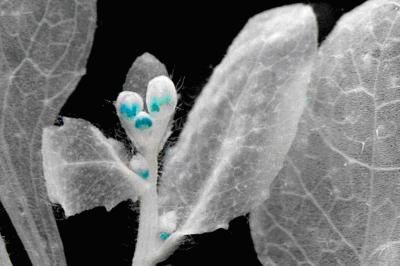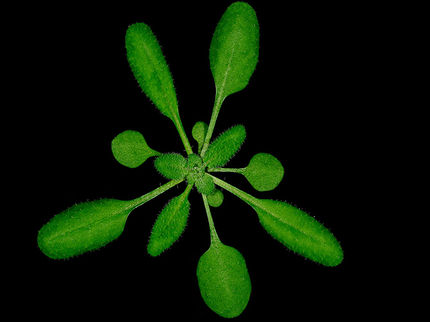The production of plant pollen is regulated by several signaling pathways
The production of plant pollen is regulated by several signaling pathways
Plants producing flower pollen must not leave anything to chance. The model plant thale cress (Arabidopsis), for instance, uses three signalling pathways in concert with partially overlapping functions. The yield becomes the greatest when all three processes are active; however, two are sufficient to form an acceptable quantity of flower pollen. In a new study, Peter Huijser and his colleagues at the Max Planck Institute for plant breeding Research in Cologne offer fascinating insights into the rich range of proteins that are used by seed plants to develop stamens and form flower pollen. The rule for plant survival is simple: to stay in the game, you have to reproduce.
Flowers are no ornamental luxury to plants; after all, they hold the male and female reproductive organs. The male pollen is produced in the stamens and the carpel bears the female ovule. The fusion of the two produces a germinable embryo that ensures the reproduction of the plant. Plants can only bloom if a radical transition occurs during their development. This stops the production of leaves and instead causes the reproductive cells that are equipped with a single set of chromosomes to form sexually distinctive reproductive organs. For optimal reproduction, this must coincide with certain external conditions, such as light and temperature. However, sensitivity to the external conditions must not be so great that it prevents blooming if the environmental conditions are not optimal.
One of the three signalling pathways that are used to develop male reproductive organs and cells cannot be substituted. This signalling pathway via the SPOROCYTELESS gene, which has been known for a long time, is activated as soon as the so-called AGAMOUS protein indicates which cells at the end of the axis of the shoot should form the stamens. Peter Huijser and his colleagues at the Max Planck Institute for Plant Breeding Research have now shown that functional male reproductive organs and cells only develop if at least one of two further signalling pathways is involved. Together with the central, indispensable signalling pathway, they ensure that not only is the formation of pollen initiated, but also that the right tissue and anatomical structures are developed for the development, maturation and release of the pollen grains. If the central signalling pathway mutates, the flowers become sterile.
Huijser and his colleagues have focussed in particular on investigating mutations in the two other signalling pathways. These lead to highly interesting differences in the plant's fertility during early and late inflorescence. One pathway uses the so-called SPL8 protein; the other uses several proteins that are related to SPL8. The latter is mainly distinguished from SPL8 by the fact that it can be repressed using a short ribonucleid acid, the so-called micro-RNA156. Huijser explains: "If, due to a mutation, the SPL8 pathway is eliminated, the plant becomes less fertile. However, the alternative signalling pathway ensures that enough mature pollen grains are produced to guarantee the survival of the species, with one important exception: the first flowers of a plant with SPL8 mutation are fully sterile. We think that, in the early floral phase, the second signalling pathway is blocked by a concentration of micro-RNA156 which, at that point, is still too high."
This conclusion from the scientists in Cologne ties in with an observation by Detlef Weigel and his colleagues at the Max Planck Institute for Developmental Biology in Tübingen. Weigel has previously shown that a high concentration of micro-RNA156 during the vegetative growth phase blocks one of the two alternative signalling pathways in that phase. The older the plant becomes, the less micro-RNA156 is formed, and thus its effect on the signalling pathway is reduced. When the first flowers form, the effect is still stronger.
Huijser concludes: "The first flowers are fertile thanks to the two other signalling pathways, that is, SPOROCYTELESS and SPL8. Without SPL8, the thale cress cannot produce mature pollen grains in the first flowers. It is not until a later floral stage that the flowers become fertile: once the retarding effect of micro-RNA156 has completely subsided and the other signalling pathway has been triggered. This also explains why the three signalling pathways together make for the best result in pollen grain production. However, two are sufficient to ensure plant fertility."

This brightened image shows the inflorescence of a transgenic thale cress plant (Arabidopsis thaliana). The anthers in the still unopened floral buds are stained blue to highlight expression of miR156d.
Max Planck Institute for Plant Breeding Research





















































